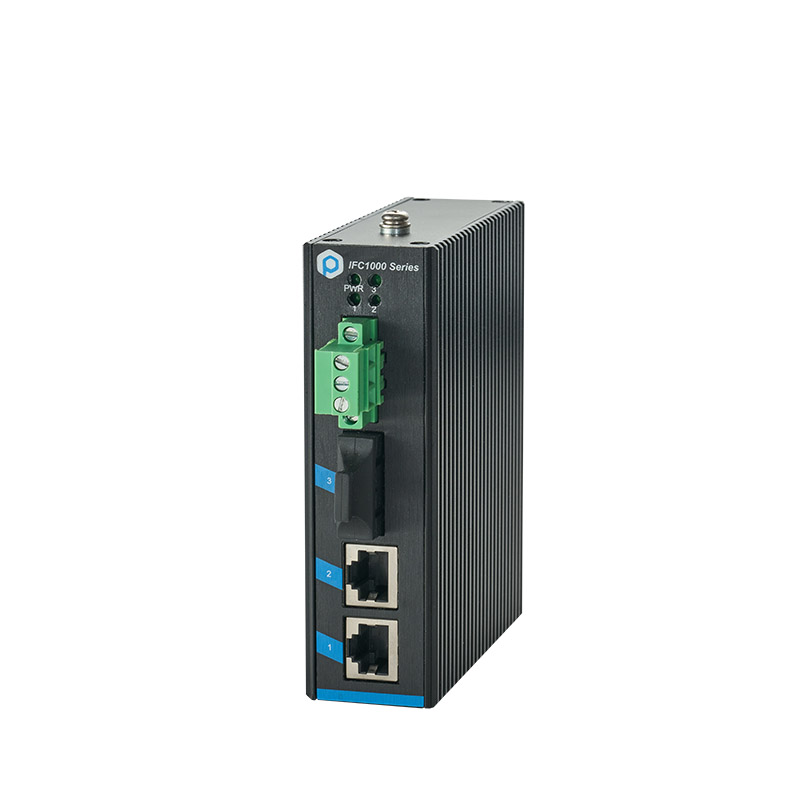Media converter is an Ethernet transmission media conversion unit that exchanges short distance twisted pair electrical signals with long distance optical signals. It is also called fiber converter in many places. The product is generally used in the actual network environment where the Ethernet cable cannot cover and optical fiber must be used to extend the transmission distance, and is generally positioned in the access layer application of broadband MAN; For example: HD video image transmission of monitoring security project; At the same time, it has also played a huge role in helping to connect the last kilometer of optical fiber line to the MAN and the outer network.
Operating principle of Media converter
Optical fiber technology uses glass (or plastic) filaments (fibers) to transmit data. The use of optical fiber technology is entirely based on the principle of total internal reflection. The reflection or refraction of a ray depends entirely on the angle at which it intersects the plane. The optical fiber system is very similar to the copper conductor system. The difference is that optical fibers use light pulses to transmit information along optical fiber lines, while copper conductor uses electronic pulses to transmit information along its own lines.
The principle of fiber converter is to exchange short distance twisted pair electrical signals with long distance optical signals. The fiber converter just takes advantage of the advantages of optical fiber communication, such as large information capacity, good confidentiality, light weight, small size, no relay, long transmission distance, etc., to solve the transmission problems of Ethernet. It has been well applied in the actual network environment where Ethernet cable cannot cover and optical fiber must be used to extend the transmission distance.

Criteria for measuring the performance of Media converter:
When it comes to media converter, we have to say that its transmission stability and transmission distance. However, poor performance fiber converter are subject to various tests. How can we distinguish poor performance fiber converter?
First, look at the production identification. A good fiber converter shall include the following information: name of the manufacturer, enterprise name, trademark or other identification marks. In addition, there are clear model codes, model specifications, etc. The identification of poor quality fiber converters will not be too clear.
Second, the transmission distance. The transmission distance supported by the fiber converter (2~120km), whether single-mode or multi-mode, has a certain transmission distance. The poor quality fiber converter may not meet the common transmission requirements in the transmission distance.
Finally, connect the fiber converter to test. Check whether the indicator of the media converter or optical module and the indicator of the twisted pair port flicker. If the indicator flickers, stop using the media converter. The use of high-quality media converter can ensure the stable operation of data transmission, and the use of low-quality media converters for cheap will not only bring inconvenience, but also cause unnecessary losses in the later period.
Summary: Media converter has incomparable advantages over Ethernet cable. It breaks the 100 meter limitation of Ethernet cable, truly realizes long-distance non blocking transmission and switching, and can ensure high security and stability during data transmission. It can be predicted that the media converter will be active in the network deployment for a long time in the future, which is an indispensable part of the actual network construction. With the development of the times, the fiber converter will continue to develop towards the direction of high intelligence, high stability, network management and low cost. It will glow in the data transmission network.
Contact: sales
Phone: 18688787693
E-mail: sales@hsindustrialswitch.com
Add: Room 608, Building B,GaoXinQi TEC Park,Baoan District, ShenZhen,China